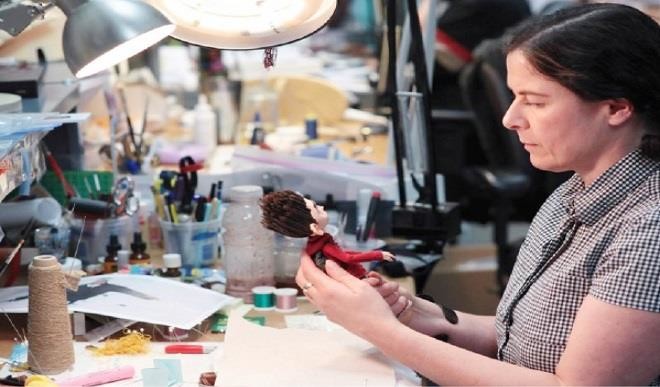‘Kubo’ costume designer reveals inspiration for Oscar-nominated movie
Daily Trust: How did it feel to get such a historic nomination from the Costume Designers Guild? Deborah Cook: It’s absolutely thrilling! And very hard to find words to do that feeling justice. To be nominated for ‘Kubo And The Two Strings’ among such an eminent, distinguished group is truly a very proud moment indeed. […]


Daily Trust: How did it feel to get such a historic nomination from the Costume Designers Guild?
Deborah Cook: It’s absolutely thrilling! And very hard to find words to do that feeling justice. To be nominated for ‘Kubo And The Two Strings’ among such an eminent, distinguished group is truly a very proud moment indeed. This is a first for animation and I couldn’t be happier or more pleased and thank the CDG profusely for this honour and our illustrious director Travis Knight and LAIKA for the opportunity to work on such an epic adventure.
DT: Which movies in the current awards season did you think would get nominated?
Cook: Fantasic Beasts And Where To Find Them, Miss Peregrine’s Home For Peculiar Children, Doctor Strange, and Florence Foster Jenkins.
DT: What was your approach to designing the costumes in Kubo And The Two Strings?
Cook: The costume designs emerged from reading the story and an in-depth study of the culture and costume of ancient feudal Japan from the Jomon era – 300BC through Heian, Edo and Meiji eras. I visited Japan to research and to observe what essence of historic costume had made its way into contemporary clothing and how clothes are worn there today.
I wanted the costumes to revere our love of Japanese culture and its films and have resonance in contemporary times and also to exercise some creative license that reflected that. Fabric samples I collected there from vintage clothing informed the colour palette for our costumes. I also looked at historic Japanese artists such as Kiyoshi Saito, Yoshitoshi and the designs of Issey Miyake, as well as how Kimonos were made, historically, and the social significance of the surface illustrations.
Researching the emblems of Japan played a part too, such as family crests and the significance of the image of waves, grasses, certain flowers, mountains, fish and birds and how kimonos were worn by different age groups, social ranking and gender.
Tomoe Gozen, a female samurai warrior influenced how I approached the designs for the sisters and Onryo from the Japanese spirit world, who are spirits that have returned to the physical world to seek vengeance plus a smattering of predatory bird talons and feather configurations.
I was influenced by the appearance of the graphic fold lines that can be seen in a heavily aged ancient imperial garments and brought those ideas together in a map over the costumes, and also invest an origami folding appearance and language to follow through all of the costumes and form a consistency in costume movement throughout the entire cast.
DT: How much time did it take you to finish work on the designs?
Cook: From the beginnings of research to the finished work could be 3-4 years. I work across many costumes, and now more than one film at a time.
DT: What was your biggest challenge on ‘Kubo’?
Cook: It’s always our hero who proves most challenging. Once he was designed, all the other characters resonate the language of his costume. He’s the main adventure, where the style of the costumes are found through many iterations and experiments.
DT: Which costume would you say is your favourite?
Cook: Kubo’s costume, as well as The Sisters’. They are one step further into the story’s magical kingdom and inhabit a more mystical realm and so more unusual textiles and techniques could be employed. They were driven by looking at the legacy of historical Japan, laced with legends and ghost stories.
DT: How would you describe the experience of designing costumes for an animated movie, in comparison with working on a live-action one?
Cook: I often design over images of our actual puppet body shapes, much like a live-action costume is designed over a real body shape. One additional consideration is that live-action costumes move with the body. That motion is inherent and comes free with the movement of the human body, but in animation we need to engineer this movement and make it an integral part of the costume build.
Our characters stand between 11-15 inches at their tallest. This is another huge consideration. This scale costume design is a challenge particular to stop frame animation costumes and beyond the realm of costume design for live-action.
